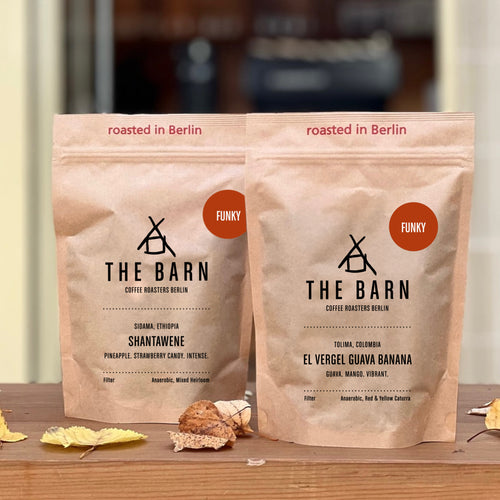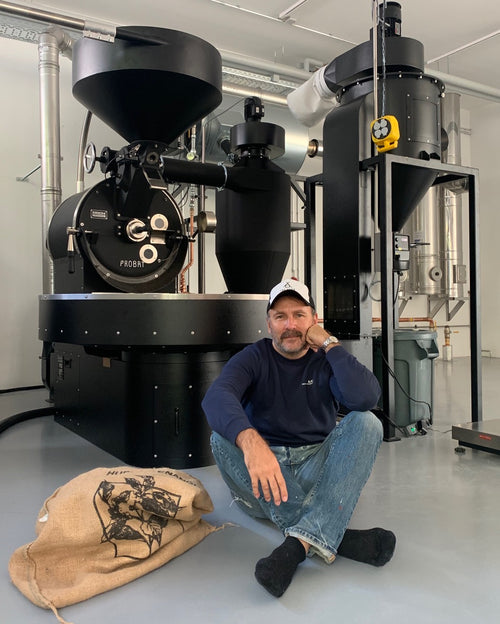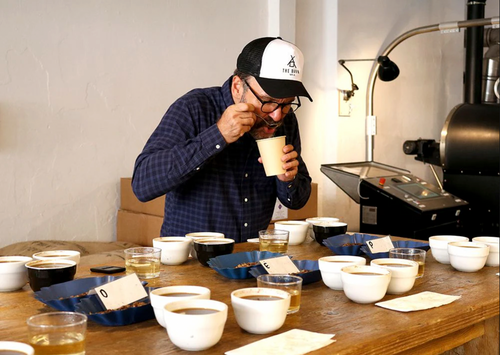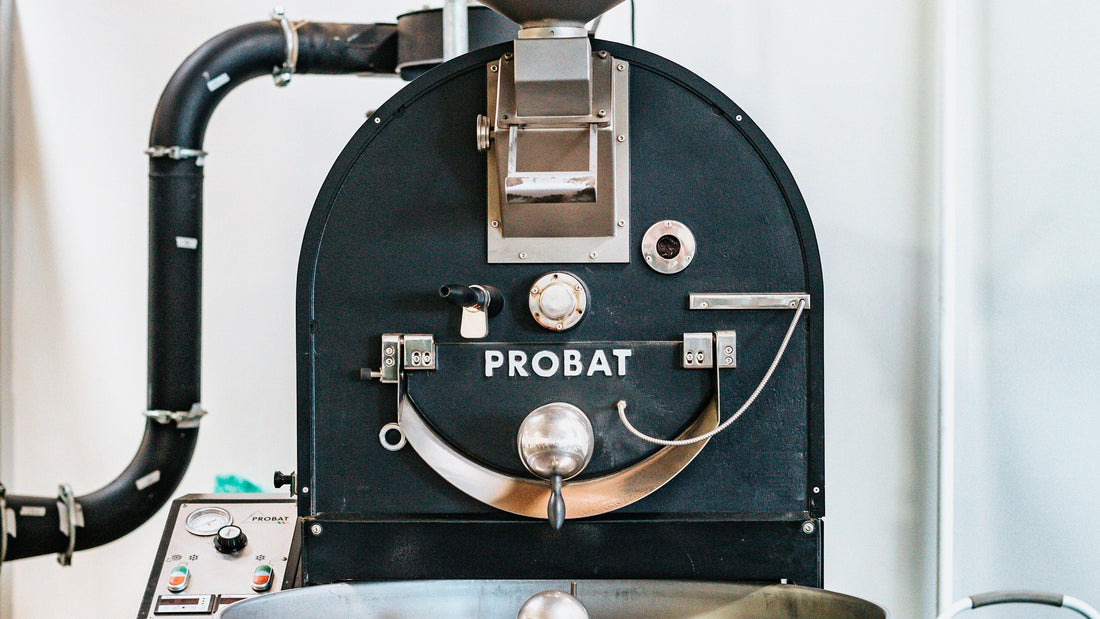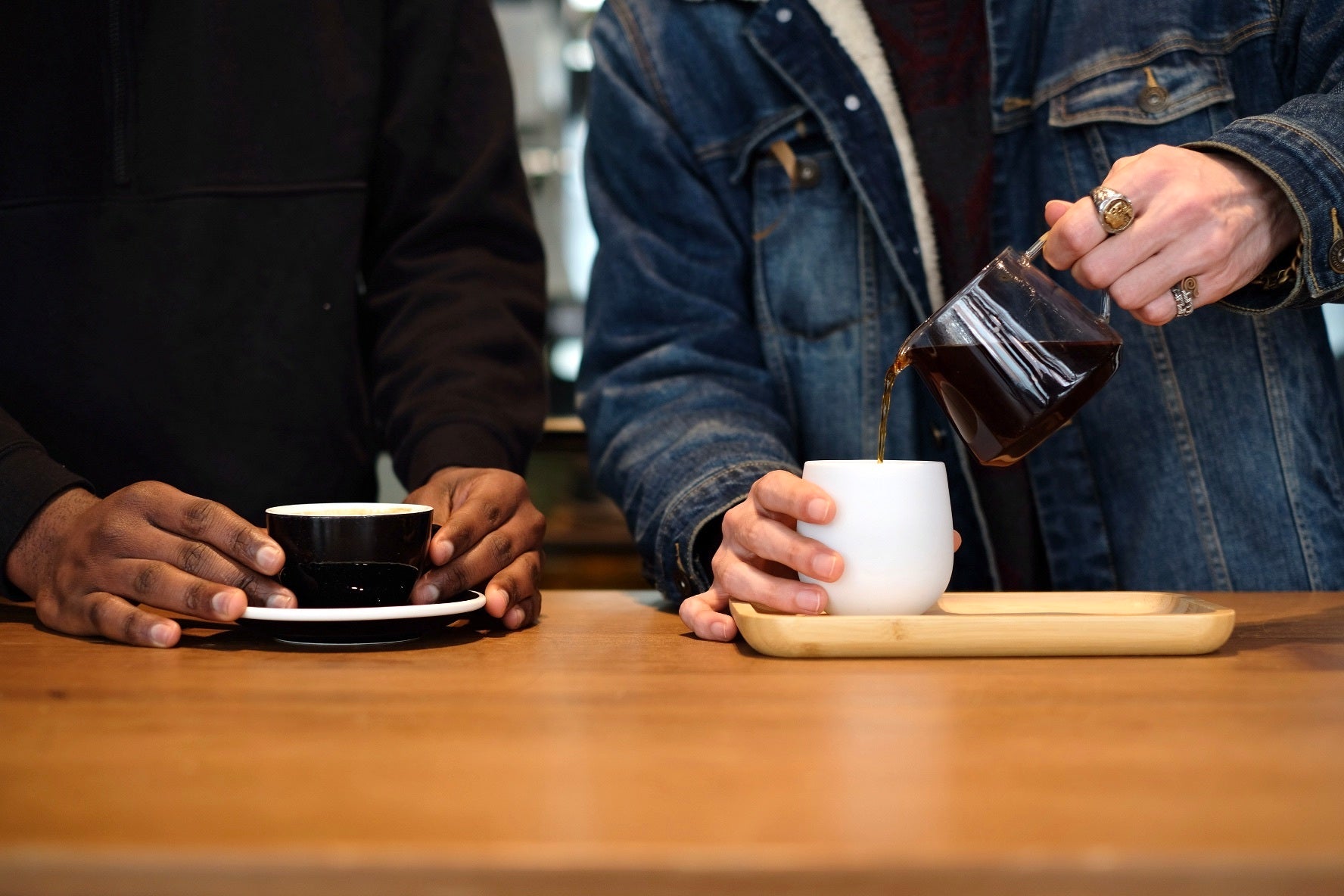When we roast...
we are not just turning those little green beans brown.
There are a great number of chemical reactions that happen within the roasting machine during this time, and for many days after. While we do roast on the lighter side of fully developed, our coffee still reacts. During the roast, it has taken in and pushed out large amounts of heat and gasses. Heat is applied carefully to the beans within the double-walled drum of our Probat machine. We control everything from temperature to airflow to ensure that the beans maintain their desirable natural flavours. Our roasting style is there to accentuate flavour and not hide it. Among the chemical reactions, a number of different gasses form inside the beans; among these gasses is carbon dioxide. These gasses begin to permeate from the coffee after the roast, the majority in the 24 hours afterwards, an important time that is called the ‘degassing’ period. This period can drastically affect the flavour of your coffee and how it acts when you brew it.
Can it be too fresh?
On all of our coffee bags, we provide you with a date of roast and a ‘best before’ date. While coffee doesn’t necessarily go ‘off,’ there is an optimal time frame for when you can enjoy it at its best and most flavoursome. Such as, a coffee can be determined ‘too’ fresh for brewing. We always recommend letting your coffee beans ‘degas’ or rest for about a week after roast date. Over this resting period, we recommend the optimal time to start brewing our espresso roasts (if you are using a professional 9 bar machine) is 12-14 days after roast. For our filter roasts we recommend a week of resting time to get the best flavours and balance to your pour overs and aeropress brews. The best way to let your coffee degas is by ensuring the bag sits closed (no need to put it in the fridge or freezer), as the little valve on the back isn’t just for the smell but to let the gasses escape with ease. As long as the coffee can sit sealed where it is not exposed to oxygen and light, for instance within a cupboard, it is it optimal for the resulting cup.
Chemical Reactions and Optimal Flavour
So how does carbon dioxide affect the flavour of your brew?




